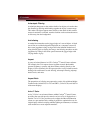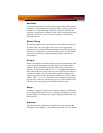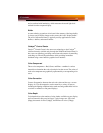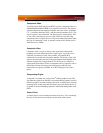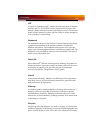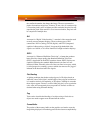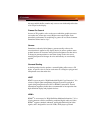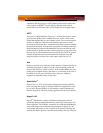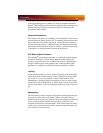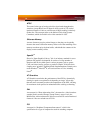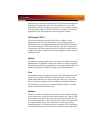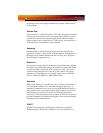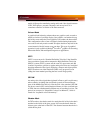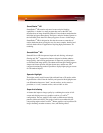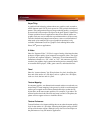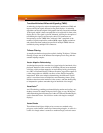
129
of the 3D rendering process, making it a major performance bottleneck.
HyperZ
™
HD technology reduces the memory bandwidth consumed by the
Z-Buffer, thereby increasing performance while also making the 3D
environment more realistic.
Keyframe Interpolation
This feature is also known as “morphing.” In an animation, a start and end
point are picked as the key frames. In a 3D rendering, the start point could
have a character with a neutral expression, and the end point could have
that same character smiling. Additional frames are interpolated (inserted)
between the two keyframes in order that “morphs” (transforms) the image
so that there is a smooth transition between the key frames.
KTX Buffer Region Extension
This OpenGL
®
programming term refers to a feature that rapidly updates
portions of the display of 3D modeling applications that change very
quickly, or have been moved or occluded. It does this by optimizing the
storage of buffer regions in the graphics card’s memory buffer. Other
applications are typically not adversely affected when this is enabled.
Lighting
In 3D computer graphics, refers to aspects and quality of the virtual light
source being used to make an object visible. Lighting can strongly affect
the “mood” of a scene. For example, a “harsh” light could be a bare
lightbulb that is glaringly bright on the objects closest to it while casting
strong shadows in the background. A “softer” light would be more diffuse
and not cast shadows, such as you would get outdoors on a typical overcast
day.
Mipmapping
The most memory-intensive aspect of 3D graphics are the textures that give
an object its realism (like wood, marble, leather, and cloth). Because
objects in real life become less detailed as they move farther away from the
viewer, 3D programmers simulate this by using less detailed, lower
resolution texture maps on distant objects. These texture maps are merely
scaled down versions of the main texture map used when the object is up
close, and they use less memory.



